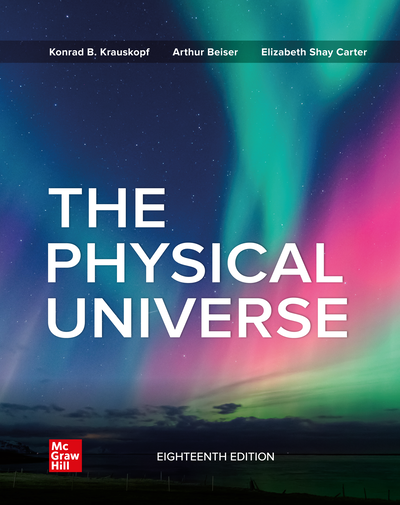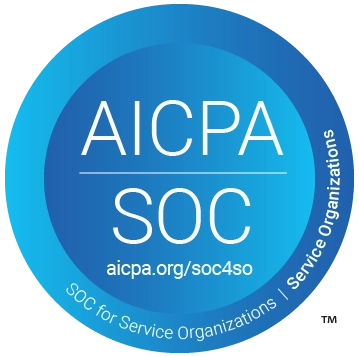Log In to My PreK-12 Platform


The Physical Universe, 18th Edition
Format Options:
-
Lowest Price!
eBook from $54.00 -
Print from $70.00 -
Connect from $118.96 -
GO from $60.00
McGraw Hill eBook
Textbook Rental (150 Days Access)
- Rent for a fraction of the printed textbook price
- Complete text bound in hardcover or softcover
Loose-Leaf Purchase
Unbound loose-leaf version of full text
Shipping Options
- Standard
- Next-day air
- 2nd-day air
Orders within the United States are shipped via FedEx or UPS Ground. For shipments to locations outside of the U.S., only standard shipping is available. All shipping options assume the product is available and that processing an order takes 24 to 48 hours prior to shipping.
Note: Connect can only be used if assigned by your instructor.
Connect (180 Days Access)
- Digital access to a comprehensive online learning platform
- Includes homework, study tools, eBook, and adaptive assignments
- Download the free ReadAnywhere app to access the eBook offline
Connect + Loose-Leaf
- Comprehensive online learning platform + unbound loose-leaf print text package
- Connect includes homework, study tools, eBook, and adaptive assignments
- Download the free ReadAnywhere app to access the eBook offline
Shipping Options
- Standard
- Next-day air
- 2nd-day air
Orders within the United States are shipped via FedEx or UPS Ground. For shipments to locations outside of the U.S., only standard shipping is available. All shipping options assume the product is available and that processing an order takes 24 to 48 hours prior to shipping.
McGraw Hill GO (180 Days Access)
- Digital access to eBook+ embedded in your school's Learning Management System (LMS)
- Includes full eBook and chapter questions
- Download the free ReadAnywhere app for offline and mobile access
* The estimated amount of time this product will be on the market is based on a number of factors, including faculty input to instructional design and the prior revision cycle and updates to academic research-which typically results in a revision cycle ranging from every two to four years for this product. Pricing subject to change at any time.
Instructor Information
Quick Actions (Only for Validated Instructor Accounts):
Aimed at presenting the essentials of physics, chemistry, earth science, and astronomy in a clear, easy-to-understand way, The Physical Universe shows students how science works, how scientists approach problems, and why science constantly evolves in its search for understanding. The book concentrates on those aspects of the physical sciences most relevant to a nonscientist who wants to understand how the universe works and to know something about the connections between science and everyday life. The new edition continues the important theme of helping students become well-informed citizens.
The new edition of The Physical Universe is also available in McGraw Hill Connect, featuring SmartBook 2.0, STEM Prep Modules, Application-Based Activities, a Curated Question Bank, and more!
Chapter 1: The Scientific Method
Chapter 2: Motion
Chapter 3: Energy
Chapter 4: Energy and the Future
Chapter 5: Matter and Heat
Chapter 6: Electricity and Magnetism
Chapter 7: Waves
Chapter 8: The Nucleus
Chapter 9: The Atom
Chapter 10: The Periodic Law
Chapter 11: Crystals, Ions, and Solutions
Chapter 12: Chemical Reactions
Chapter 13: Organic Chemistry
Chapter 14: Atmosphere and Hydrosphere
Chapter 15: The Rock Cycle
Chapter 16: The Evolving Earth
Chapter 17: The Solar System
Chapter 18: The Stars
Chapter 19: The UniverseMain Features
- LMS Integration
- Print/Loose-Leaf Book Add-On Availability
- Presentation Slides & Instructor Resources
- Question & Test Banks
- Adaptive Assignments
- Student Progress Reporting & Analytics
- Essay Prompts
- Polling
- Prebuilt Courses
- Interactive Exercises
- eBook Access (ReadAnywhere App)
- Remote Proctoring (Proctorio)
- Subject-Specific Tools
Main Features
- Quick Setup
- Lives within the LMS
- Assignable Readings
- Auto-Graded Chapter Questions
About the Author
Konrad Krauskopf
Konrad B. Krauskopf was born and raised in Madison, Wisconsin and earned a B.S. in chemistry from University of Wisconsin in 1931. He then earned a Ph.D. in chemistry at the University of California in Berkeley. When the Great Depression made jobs in chemistry scarce, Professor Krauskopf decided to study geology, which had long fascinated him. Through additional graduate work at Stanford University, he earned a second Ph.D. and eventually a position on the Stanford faculty. He remained at Stanford until his retirement in 1976. During his tenure, Professor Krauskopf also worked at various times with the U.S. Geological Survey, served with the U.S. army in occupied Japan, and traveled to Norway, France, and Germany on sabbatical leaves. His research interests included field work on granites and metamorphic rocks and laboratory study on applications of chemistry to geologic problems, especially the formation of ore deposits. In recent years, Professor Krauskopf had spent time working with various government agencies on the problem of radioactive waste disposal. Professor Krauskopf passed away on May 8, 2003.
Arthur Beiser; Emeritus
Arthur Beiser, a native of New York City, received B.S., M.S., and Ph.D. degrees in physics from New York University, where he later served as Associate Professor of Physics. He then was a Senior Research Scientist at the Lamont Geo- logical Observatory of Columbia University. His research interests were chiefly in cosmic rays and in magnetohydrodynamics as applied to geophysics and astrophys- ics. In addition to theoretical work, he participated in a cosmic-ray expedition to an Alaskan peak and directed a search for magnetohydrodynamic waves from space in various Pacific locations. A Fellow of The Explorers Club, Dr. Beiser was the first chairman of its Committee on Space Exploration. He is the author or coauthor of 36 books, mostly college texts on physics and mathematics, 14 of which have been translated into a total of 27 languages. Two of his books are on sailing, The Proper Yacht and The Sailor’s World. Figure 13-21 is a photograph of Dr. Beiser at the helm of his 58-ft sloop; he and his wife Germaine have sailed over 150,000 miles, includ- ing two Atlantic crossings and a rounding of Cape Horn. Germaine Beiser, who has degrees in physics from the Massachusetts Institute of Technology and New York University, is the author or coauthor of seven books on various aspects of physics and has contributed to The Physical Universe. For a number of years she was the editor of a cruising guide to the Adriatic Sea.
Elizabeth Shay Carter
Accessibility
Creating accessible products is a priority for McGraw Hill. We make accessibility and adhering to WCAG AA guidelines a part of our day-to-day development efforts and product roadmaps.
For more information, visit our accessibility page, or contact us at accessibility@mheducation.com
Affordability
Reduce course material costs for your students while still providing full access to everything they need to be successful. It isn't too good to be true - it's Inclusive Access.
Need support? We're here to help - Get real-world support and resources every step of the way.

